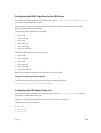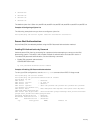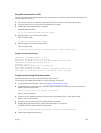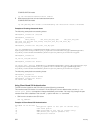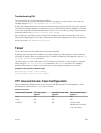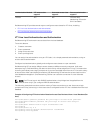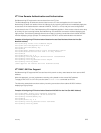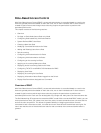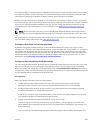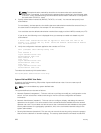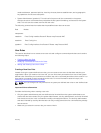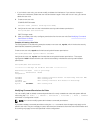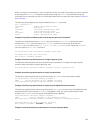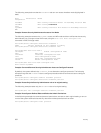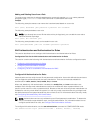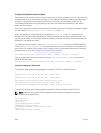
A constrained RBAC model provides for separation of duty and as a result, provides greater security than
the hierarchical RBAC model. Essentially, a constrained model puts some limitations around each role’s
permissions to allow you to partition of tasks. However, some inheritance is possible.
Default command permissions are based on CLI mode (such as configure, interface, router), any specific
command settings, and the permissions allowed by the privilege and role commands. The role command
allows you to change permissions based on the role. You can modify the permissions specific to that
command and/or command option. For more information, see Modifying Command Permissions for
Roles .
NOTE: When you enter a user role, you have already been authenticated and authorized. You do
not need to enter an enable password because you will be automatically placed in EXEC Priv mode.
For greater security, the ability to view event, audit, and security system log is associated with user roles.
For information about these topics, see Audit and Security Logs.
Privilege-or-Role Mode versus Role-only Mode
By default, the system provides access to commands determined by the user’s role or by the user’s
privilege level. The user’s role takes precedence over a user’s privilege level. If the system is in “privilege or
role” mode, then all existing user IDs can continue to access the switch even if they do not have a user
role defined. To change to more secure mode, use role-based AAA authorization. When role-based only
AAA authorization is configured, access to commands is determined only by the user’s role. For more
information, see
Configuring Role-based Only AAA Authorization.
Configuring Role-based Only AAA Authorization
You can configure authorization so that access to commands is determined only by the user’s role. If the
user has no user role, access to the system is denied as the user will not be able to login successfully.
When you enable role-based only AAA authorization using the aaa authorization role-only command in
Configuration mode, the Dell Networking OS checks to ensure that you do not lock yourself out and that
the user authentication is available for all terminal lines.
Pre-requisites
Before you enable role-based only AAA authorization:
1. Locally define a system administrator user role. This will give you access to login with full
permissions even if network connectivity to remote authentication servers is not available.
2. Configure login authentication on the console. This ensures that all users are properly identified
through authentication no matter the access point.
If you do not configure login the authentication on the console, the system displays an error when
you attempt to enable role-based only AAA authorization.
3. Specify an authentication method list (RADIUS, TACACS+, or Local).
You must specify at least local authentication. For consistency, the best practice is to define the
same authentication method list across all lines, in the same order of comparison; for example VTY
and console port.
You could also use the default authentication method to apply to all the LINES (console port, VTY).
Security
827



